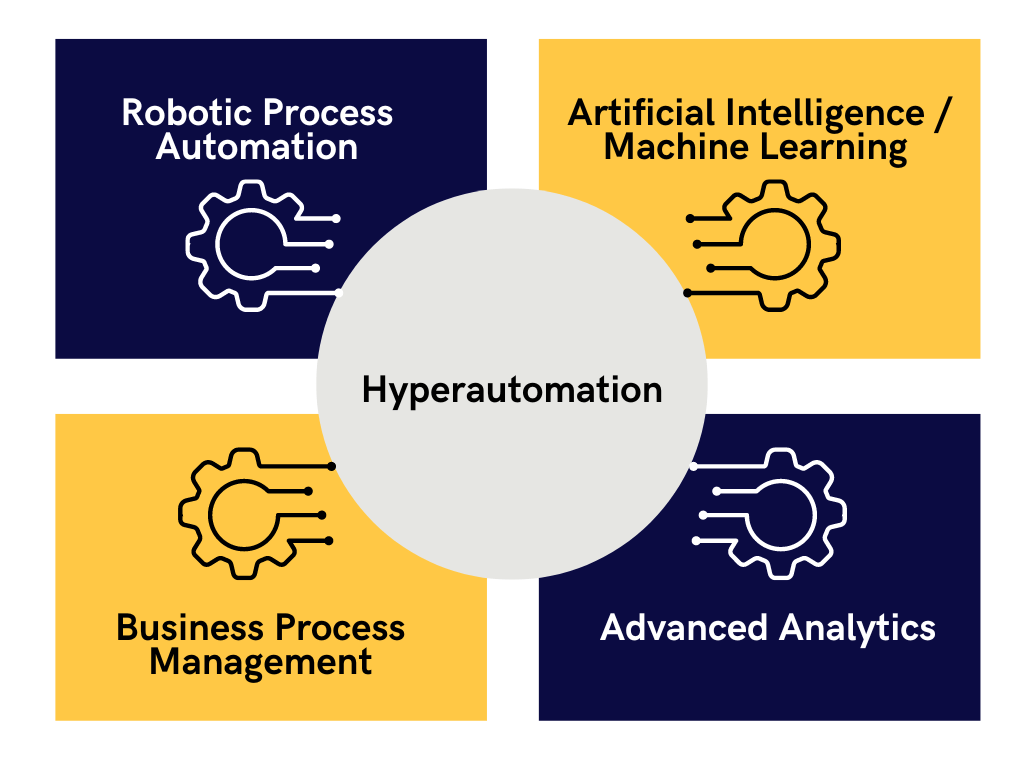Automation Vs Hyperautomation
The accomplishment of a repeated activity without manual intervention is referred to as automation. It usually happens on a smaller scale, with solutions developed to solve specific problems. Hyperautomation, on the other hand, refers to the employment of numerous automation techniques to allow intelligent automation, such as ML and RPA, in order to expand automation efforts.
How does it work?
A hyper-automation system determines which business processes can be automated within the organization. Hyperautomation uses software bots to detect these operations, and the ecosystem builds software robots to carry them out. Hyperautomation examines organized and repeated corporate operations, then records how an employee executes this activity and establishes a systematic workflow. Based on this, the hyper-automation platform generates software bots capable of carrying out this activity.
What if a company could automate the transformation of unstructured data into structured data? Hyperautomation accomplishes this through remote process automation backed by AI. To read, categorize, analyze, and extract information from unstructured data, hyper-automation uses natural language processing, computer vision, fuzzy logic, and pattern recognition.
Benefits of hyper-automation
Increase work automation
RPA can only automate a set of rules-based, repetitive operations that make work simpler, but hyper-automation solutions can do much more. Hyperautomation combines a number of components and technologies to increase the amount of automation you can apply to your business, allowing you to complete more work more effectively.
Employee satisfaction
Hyperautomation improves job quality by utilizing cutting-edge technology to automate manual tasks and assure increased employee happiness and satisfaction. It also includes everyone, from programmers to business analysts, in contributing to digital transformation, which increases staff engagement and creates a more competitive and collaborative workplace.
Business Agility and ROI
Business agility refers to the ability of your company to develop and alter as needed. You can secure endless scalability for your organization using hyper-automation solutions. Intelligent automation systems, whether layered together or functioning in parallel, make it simpler for firms to adapt to changing dynamics swiftly, discover new possibilities, and grow as needed.
The ultimate purpose of every new initiative or transformation program is to improve the present situation and obtain better results. It is conceivable to generate strong ROI with hyper-automation driving the tide of change in organizations. Take, for example, the automation of invoicing processing. Instead of having a bot read and extract information, hyper-automation helps the process by automating the end-to-end multi-layered procedures involved in invoice processing, which results in improved outcomes and profitable returns.
Future readiness
The practice of continually incorporating automation into an organization’s business operations is known as hyper-automation. is future-ready, allowing robots to read into business processes, understand how they function, assist in their improvement, and continuously improve. This implies that even years from now, organizations will be prepared for the future and will not face the risk of their IT infrastructure becoming obsolete, because hyper-automation evolves and grows alongside the enterprise.
Conclusion
Hyperautomation assists organizations by assisting firms in leveraging technology and improving operational efficiency. When analyzing how Hyperautomation benefits organizations, it is critical to understand that strong Hyperautomation products always utilize their expertise in BPM, RPA, Analytics, Document AI, OCR, and other technologies to enable organizational transformation.




